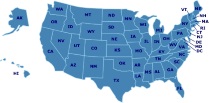Discover & Develop Your Child's Learning Style
Get in-depth information about the many learning styles that people have. With the freedom of homeschooling, you can help your child in the best way for them. These resources will help you discover the different learning styles and how they can inform your curriculum choices, planning, and learning in your homeschooling.
Understanding Your Child's Learning Style
In Their Own Way: Discovering and Encouraging Your Child's Multiple Intelligences
Right-Brained Children in a Left-Brained World: Unlocking the Potential of Your ADD Child
Learning Styles and Hemispheric Dominance—Right or Left Brain: Which is Dominant in Your Family?
Cognitive Styles and Learning Strategies: Understanding Style Differences in Learning and Behaviour
Learning Styles: Reaching Everyone God Gave You to Teach
Raising Topsy-Turvy Kids: Successfully Parenting Your Visual-Spatial Child
Understanding how children learn best allows you to meet their needs and help them succeed. A visual-spatial learner remembers things in pictures and learns better with visual clues and strategies. This book addresses those needs and helps you figure out how to encourage this type of learner in your homeschool environment.
Different Brains, Different Learners: How to Reach the Hard to Reach
Arm yourself with powerful knowledge for solving difficult learning problems; and discover specific how-to strategies for turning a borderline student into a confident achiever.
Upside-Down Brilliance: The Visual Spatial Learner
What’s My Child’s Learning Preference?
Discover and unleash your child's superpower! Your observations about your child can help you understand his/her particular learning style and preferences. These really are your child's superpowers for learning. Insight into learning styles can help you choose curriculum and can guide your homeschool planning, resulting in enhanced learning, improved attitudes, and more enjoyment for you child and for you too.
How to Homeschool: Determine Your Child’s Learning Style
One of the first steps you should take when embarking on homeschooling is determining your child's learning style. Most people tend towards one of the four main learning styles. This means that they are more successful in learning when the learning and teaching corresponds to this style. Few people are only one learning style, so exploring the different styles is helpful. This guide details four learning styles: kinesthetic, visual, auditory, and tactile.
How to Determine Your Child's Learning Style
How To Identify Children’s Learning Styles
An appreciation of your child's primary learning style will help you support them in learning at home. It is also important to understand your own learning style if that is different from your child's. First, identify your own learning style of one of the four primary types: visual learner, kinaesthetic learner, auditory learner, and logical learner.
The Way They Learn
Determining Your Child's Learning Style
Most students use a combination of learning styles, drawing from the four main types: visual, auditory, reading/writing, and kinesthetic. Responding with the right approach to your child's learning style can make all the difference when it comes to your child learning, understanding, and remembering educational material. With understanding of your child's learning style, you can more effectively choose materials and methods to emphasize his or her strengths rather than work against them.
Quiz: What's Your Child's Learning Style?
Knowing and understanding your child's learning style is the key to homeschooling success. This short quiz will help you determine what ways of learning are best for your child.
Discovering Your Child’s Learning Style
Everyone has their own preferred way of learning. Learning styles can be generally divided into three types: visual, auditory, and kinesthetic learning styles. Discovering your child's learning style will be of benefit to both your child and to you too. By understanding these learning styles, you can better choose curriculum and plan out a strategy that will work best for you and your child.
Discover Your Children's Gifts
This comprehensive work on children's learning styles and creativity expression is a tremendous help to parents as they begin homeschooling. The authors discuss how God gifts children in different ways with different ways of learning and expression. This guide will help you identify your child's personality gifts and help them reach their full potential.
The Learning Style Quiz
How do I know what my child's learning style is? This quick quiz can help you figure it out. There are lots of combinations of different learning styles and usually children are not just one single style. Everyone learns in a variety of ways. Understanding this can help you re-evaluate and adjust to your child's particular learning style. This quiz focuses on the three main learning styles: auditory, visual, and kinesthetic.
How to Determine Your Child's Learning Style
Children process information and learn in different ways. There are three primary ways in which people learn: visual, auditory, and kinesthetic. When you discover how your child learns, you can help shape their educational experience to prioritize this primary learning style, while also ensuring a well-rounded education.
In Their Own Way: Discovering and Encouraging Your Child's Multiple Intelligences
Learning Styles: Reaching Everyone God Gave You to Teach
Featured Resources
As an Amazon Associate, we earn from qualifying purchases. We get commissions for purchases made through links on this site.












